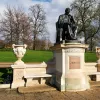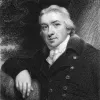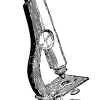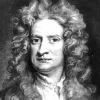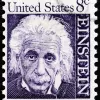Important update from TheSchoolRun
For the past 13 years, TheSchoolRun has been run by a small team of mums working from home, dedicated to providing quality educational resources to primary school parents. Unfortunately, rising supplier costs and falling revenue have made it impossible for us to continue operating, and we’ve had to make the difficult decision to close. The good news: We’ve arranged for another educational provider to take over many of our resources. These will be hosted on a new portal, where the content will be updated and expanded to support your child’s learning.
What this means for subscribers:
- Your subscription is still active, and for now, you can keep using the website as normal — just log in with your usual details to access all our articles and resources*.
- In a few months, all resources will move to the new portal. You’ll continue to have access there until your subscription ends. We’ll send you full details nearer the time.
- As a thank you for your support, we’ll also be sending you 16 primary school eBooks (worth £108.84) to download and keep.
A few changes to be aware of:
- The Learning Journey weekly email has ended, but your child’s plan will still be updated on your dashboard each Monday. Just log in to see the recommended worksheets.
- The 11+ weekly emails have now ended. We sent you all the remaining emails in the series at the end of March — please check your inbox (and spam folder) if you haven’t seen them. You can also follow the full programme here: 11+ Learning Journey.
If you have any questions, please contact us at [email protected]. Thank you for being part of our journey it’s been a privilege to support your family’s learning.
*If you need to reset your password, it will still work as usual. Please check your spam folder if the reset email doesn’t appear in your inbox.
Edward Jenner
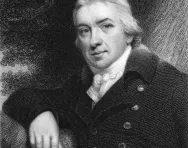
Edward Jenner was a very famous English scientist whose name has gone down in medical history. Edward Jenner was responsible for discovering the world's first-ever vaccine and his work saved so many lives – in fact Jenner's work is said to have saved more lives than the work of any other human!
He was born in 1749 in Gloucestershire, where he trained as a doctor and became famous for his discovery of the smallpox vaccine. His discovery was a huge medical breakthrough; in 1980, the World Health Organisation declared the dangerous disease smallpox an eliminated disease.
Top 10 facts
1. Edward Jenner discovered the smallpox vaccine.
2. He was born in Berkeley, Gloucestershire on 17 May 1749 and came from a big family – he was the eighth of nine children!
3. Through his work as a country doctor Jenner came to understand that cowpox not only protected against smallpox but could be transmitted from one person to another in order to protect them from the deadly disease.
4. People were not convinced about Jenner's discovery and he was widely criticised. His critics (especially the Church) claimed it was disgusting to inocculate someone with material from a diseased animal. An 1802 cartoon showed people who had been vaccinated sprouting cow's heads!
5. Edward Jenner was made Physician Extraordinary to King George IV. His work on smallpox made him very famous in his lifetime and he received honorary degrees and tributes including a special medal from France, gift of a ring from the Empress of Russia and a string and belt of Wampum beads and a certificate of gratitude from North American Indian Chiefs.
6. Dr Jenner spent his later life working on vaccination and inoculating people for free; his work bankrupted him.
7. Jenner was also a very keen and gifted naturalist and published studies about birds including the cuckoo.
8. Today Edward Jenner is known as the "Father of Immunology".
9. After Jenner's death lots more vaccines were developed. Vaccination now prevents an estimated 2-3 million deaths every single year.
10. It is said that Edward Jenner saved more lives through his work than any other human in history.
Timeline
- 17 May 1749Edward Jenner was born in Berkeley, Gloucestershire, England
- 14 May 1796Jenner inoculated eight-year-old James Phipps with cowpox from dairymaid, Sarah Nelmes. Ten days later James was well, having had a mild case of cowpox. On July 1 Jenner inoculated the boy with smallpox matter but James did not develop the disease as he was immune thanks to his vaccination.
- 1798Jenner published the results of his research, An Inquiry into the Causes and Effects of the Variolae Vaccinae.
- 26 January 1823Edward Jenner died
- 1853Vaccination with cowpox was made compulsory in the British Isles.
- 1980The World Health Organization announced that the deadly disease of smallpox had been eradicated worldwide.


Boost Your Child's Learning Today!
- Start your child on a tailored learning plan
- Complete the activities added each week
- Watch your child's maths & English confidence grow!
Did you know?
Edward Jenner was the first doctor to vaccinate people against smallpox; he was responsible for developing the world's first vaccine.
Smallpox was a dangerous disease. In Jenner's time, smallpox killed about 10% of the population, rising to 20% in towns and cities where infection spread more easily. The symptoms of smallpox were pus-filled spots (yuk) – and those that didn't die were left with nasty sores on their face, known as 'pock-marks'. Smallpox could also make you blind.
Jenner's discovery was a huge medical breakthrough. His work is said to have saved more lives than the work of any other human! In 1980, the World Health Organisation declared smallpox an eliminated disease.
Edward Jenner wasn't just interested in medicine, he showed a great interest in nature, too. He loved being outside and looking at plants and animals and he was a keen fossil collector. He was particularly interested in the cuckoo – especially why cuckoos lay their eggs in other birds' nests!
When he wasn't making discoveries, Jenner liked to play the violin and the flute to relax.
Edward Jenner was made Mayor of his home village, Berkeley, and Justice of the Peace.
'Vacca' is the Latin word for cow, so Jenner named his treatment vaccination. Louis Pasteur, who worked on the causes and prevention of disease in 1800s, later adopted the word vaccination to mean immunisation against any disease, not just smallpox.
Sarah Nelmes caught cowpox from a cow called Blossom. Blossom's hide now hangs on the wall of St George's Medical School Library!
The Gallery images show:
- The statue of Edward Jenner in Kensington Gardens, London.
- A Portrait of Edward Jenner
Gallery
About
Edward Jenner was a very famous English scientist. He made a huge medical breakthrough that had an impact worldwide.
He was a country doctor who was born, lived and died in the small village of Berkeley in Gloucestershire.
Jenner was born on 17 May 1749 and was the eighth of nine children! His father, Stephen, was the vicar of Berkeley. Sadly, at the young age of just five, Jenner lost both his parents and was then brought up by his older siblings.
Edward wanted to be a doctor. At 15, he went to work for a country surgeon where he helped with operations and prepared medicines. When he was 21, he went to London to become a pupil of the great surgeon John Hunter. Jenner became a doctor in Berkeley in 1773 and it was there that he put his great skills of observation to great use!
He noticed, as he visited his patients, that a person who had suffered from cowpox – a mild disease that humans could catch from cattle – did not get smallpox. Jenner believed that having cowpox protected sufferers against contracting smallpox. A primitive form of vaccination called variolation (infecting a healthy person with “matter” taken from a patient sick with a mild attack of the disease) was already being used at this time.
In 1796 Jenner met a dairymaid called Sarah Nelmes with fresh cowpox sores on her finger. He injected eight-year-old James Phipps, the son of his gardener, with cowpox from Sarah Nelmes. Eight weeks later he injected the boy with smallpox and the boy did not develop the disease!
Jenner completed other experiments with the cowpox vaccine and in 1798 he published his research in a book, An Inquiry into the Causes and Effects of the Variolae Vaccinae.
Edward Jenner died of a stroke in 1823. He was buried in the Jenner family vault at the Church of St Mary's in Berkeley.
Jenner was survived by his son Robert and daughter Catherine but his eldest son Edward died of tuberculosis at the age of 21.
Variolation was forbidden by Parliament in 1840; vaccination with cowpox was made compulsory in 1853.
Jenner's house is now a small museum which houses the horns of the famous cow Blossom!
Jenner has given his name to Jenner Day, an annual celebration of infection and immunity research, and the Jenner Institute in Oxford, which studies vaccines.
Related Videos
Just for fun...
In the online game Mission Three: Nemesis in Neuropolis you'll learn about viruses and vaccines while investigating a smallpox case
Viruses and Vaccines is a Royal College of Pathologists art and creativity resource developed by immunologists, virologists and microbiologists to celebrate the vital role vaccines play in preventing disease and improving public health. Download it to colour in some viruses and antibodies, make your own origami DNA (or RNA) and prepare your own paper vaccine!
Listen to the Horrible Histories song about Edward Jenner
Find out more
The Kiddle Encyclopaedia's guide to Edward Jenner for children
Did you know that Dr Jenner opened his garden once a week so that the poor of the local area could be vaccinated? Read about the first free vaccination clinic in an article about Dr Jenner's legacy
Learn about the history of vaccination, which actually started in Ancient Greece
Dr Jenner's medicine chest, made in the 1780s, is in the Science Museum in London. You can see it in 3D online
See an extract from a letter about the statue of Edward Jenner designed by William Calder Marshall in 1858 and originally placed in Trafalgar Square, but later moved to Kensington Gardens in London
Look at images related to Jenner and vaccination
Best children's books about Edward Jenner and vaccination
See for yourself
Visit Dr Jenner's House Museum and Garden in Gloucestershire, where Dr Jenner lived and told the world about his work
There is a memorial to Edward Jenner in the nave of Gloucester Cathedral
Sculpted in 1858 by William Calder Marshall, a statue of Edward Jenner was unveiled by Prince Albert in Trafalgar Square. The statue was moved to Kensington Gardens in 1862.
The hide of Blossom, the cow used in Jenner’s smallpox experiment, was presented to St George's, University of London by Jenner’s son in 1857. Blossom takes pride of place in St George's Library.
